Your Shopping Cart
Your cart is empty.
Subtotal ( items)
Instant Rebate Applied:
Promo Code Applied: ID.me Discount Applied:
Have a Promo Code?
Size:
Item
Item
Selected for:
/ each
Add-Ons
Wireless air pump capable of pumping up to 150 psi with 2000 MAH power bank.



Fully protect your clothes and vehicle interior during transportation of your tires. For Tires up to 31" tall and wheels up to 22".
Per sensor
Add TPMS Sensors
/per sensor
Please confirm the make, year, model and trim of the vehicle you want to purchase for:
How many sensors do you need?
The vehicle you have selected is not compatible with aftermarket TPMS Sensors.
Enter a different vehicle to add TPMS sensors

 Front Tire Size:
Front Tire Size:
 Rear Tire Size:
Rear Tire Size:
 Your Vehicle:
Your Vehicle:
Pros & Cons of Staggered Fitment

Attractive Design

Improved Handling

Improved Cornering
Bumpier Ride
Poor Traction in Snow
How do I find my tire size?



Need help?
 Your Vehicle:
Your Vehicle:
Pros & Cons of Staggered Fitment

Attractive Design

Improved Handling

Improved Cornering
Bumpier Ride
Poor Traction in Snow
How do I find my tire size?



Need help?
Pros & Cons of Staggered Fitment

Attractive Design

Improved Handling

Improved Cornering
Bumpier Ride
Poor Traction in Snow
Need help?
Need help?
How do I know if I have an LT tire?

 Your Vehicle:
Your Vehicle:
Sorry, we could not find any available
wheels for your sizing selections.
Need help?
Which Tire Is Better for Fuel Efficiency? Guide to Best Fuel Efficient Tires
By Tire Agent Staff
May 15, 2024
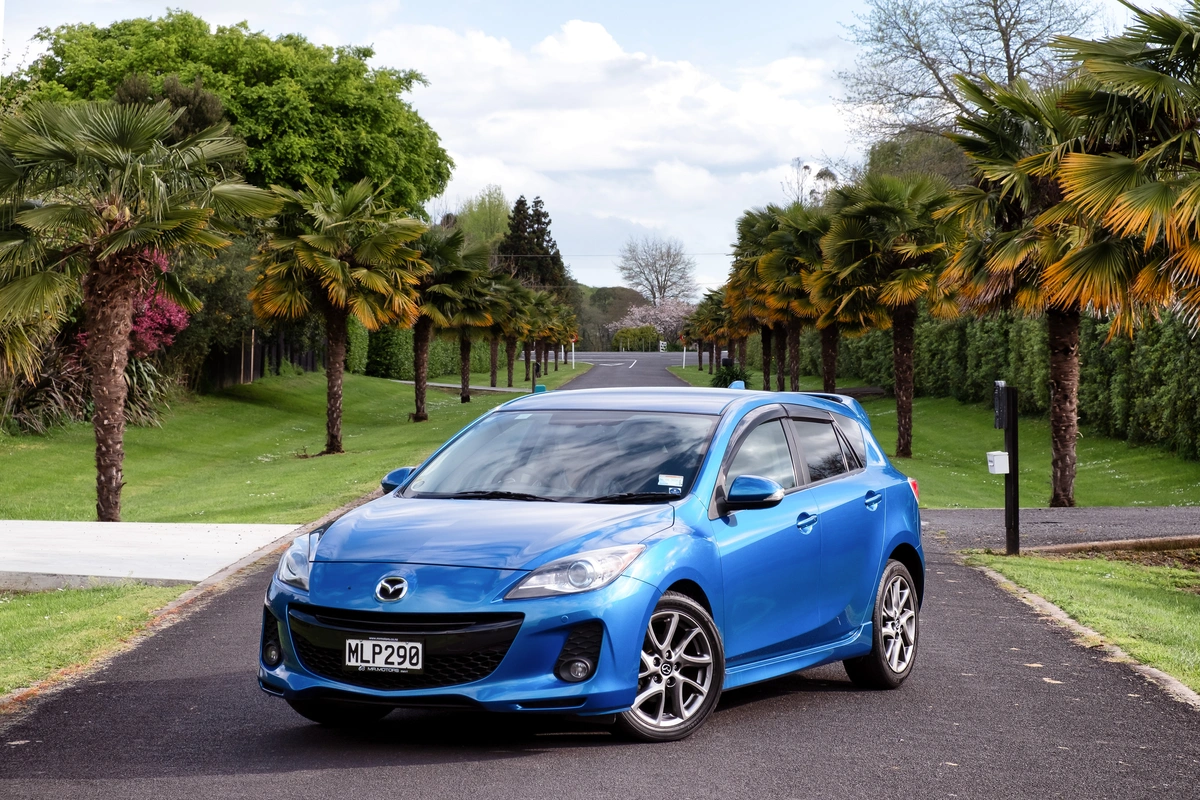
Several USTMA (US Tire Manufacturers Association) reports suggest that low rolling resistance tires boost fuel economy by 1% to 2%. This might not sound like much, but it could save you hundreds of dollars over the life of your tires.
These are the tires featured in this post:
What is a Tire Fuel Efficiency Rating?
A tire fuel efficiency rating ranks tires based on their impact on fuel economy. The rating system goes from class A to G, where A is the most efficient tyre and will save you fuel. Tires with low rolling resistance, such as the Michelin Energy Saver A/S, are designed to enhance fuel economy. Maintaining tire pressure at around 40-44 psi can also improve fuel efficiency. Always opt for low rolling resistance tires to achieve better fuel savings and performance.
Low Rolling Resistant Tires + Fuel Efficiency
When we speak of fuel-efficient tires, we're primarily talking about those with low-rolling-resistance technology. Tire rolling resistance is the amount of energy your vehicle must deliver to your tires to keep moving at a constant speed across the road's surface.
But as tires spin, the part of the tire in contact with the road deforms before returning to its relaxed state. This is known as hysteresis, which occurs when the energy required to deform a tire is larger than the energy needed to return it to its previous shape. This energy is dissipated as heat, which contributes significantly to rolling resistance.
Do you remember pedaling a bicycle when you were a child and one tire was underinflated? That is an example of hysteresis. You had to work harder to keep the bike moving. That's because hysteresis creates more rolling resistance.
Pros of LRR tires
Tires with low-rolling-resistance technology use tread design and innovative materials to reduce the amount of energy (gasoline, fuel) required to move the automobile, making them fuel efficient.
Why not overinflate your tires to reduce rolling resistance and boost fuel efficiency, some of you may be thinking? The best answer is that over-inflated tires reduce ride quality and safety. The higher the tire pressure, the less contact between the road's surface and your tires. That leads to less traction and more difficulty braking and shoddy cornering, especially when the road is wet. Instead of trying to outsmart science, it's best to use technology to your advantage. That's where fuel-efficient tires come into play.
Cons of LRR tires
One of the cons that comes with LRR tires is that they offer slightly less grip, which can make a difference on cornering. For everyday drivers who make turns at normal and safe speeds, this shouldn't be a major concern. You'll also have to ensure that your LRR tires are properly inflated, as this is key to realizing the most fuel efficiency.
How to Find Fuel-Efficient Tires on Tire Agent
To find a list of low rolling resistance tires for your vehicle, from any page on Tire Agent, look for your vehicle's make, model, year and body type.
In the filters section, select Filter & Sort >> Additional Benefits >> and select Fuel Efficient.
View the recommended tire makes and models that are fuel efficient.
Lowest Rolling Resistance Tires
This is just a highlight of tires brands that offer low rolling resistance LRR tires, which you'll find on Tire Agent.
Bridgestone Ecopia EP422 and EP422 Plus 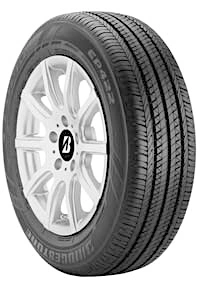
The Ecopia EP422 and Ecopia EP422 PLUS are Bridgestone’s fuel efficient and environmentally conscious tires. These all-season touring tires are designed to have good water resistance and traction in slippery conditions while still maximizing fuel efficiency at all times.
- Starting at: $160.99*
- Warranty: 70k-mile warranty
- Noteworthy: Nano Pro-Technology to improve fuel efficiency and recycled rubber to lower CO2 emissions during manufacturing.
- Sizes: 15”, 16”, 17”
Goodyear Assurance Fuel Max 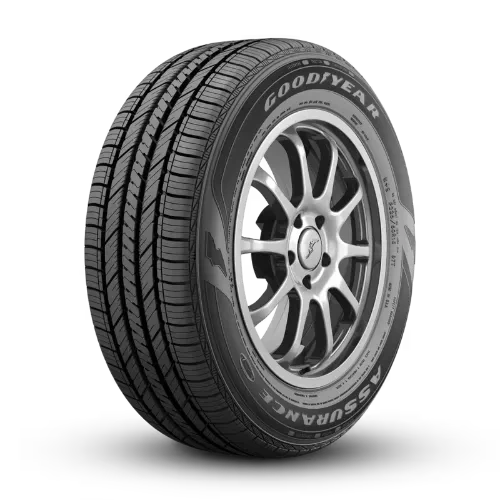
Goodyear's Assurance Fuel Max is an excellent choice for those who need traction in all weather conditions yet still wish to save on fuel.
- Starting at: $159.94*
- Warranty: 65k-mile warranty
- Noteworthy: Wide tread grooves to reduce the risk of hydroplaning while still having excellent traction on dry roads.
- Sizes: 15”, 16”, 17”, 18”
Pirelli Scorpion Verde All Season and Verde All Season Plus for SUV/CUV 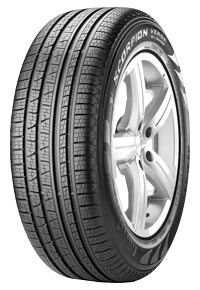
For an all-season option that has reduced rolling resistance, consider Pirelli’s efficient Scorpion Verde All Season or Scorpion Verde All Season Plus. This tire has been engineered for reduced road noise, greater fuel efficiency, and more control in inclement weather conditions.
- Starting at: $179.63*
- Warranty: 65k-mile warranty
- Noteworthy: Excellent all-weather performance! Lateral grooves are designed to flush water away, and inner block sipes improve winter traction.
- Sizes: 16”, 17”, 18”, 19”, 20”, 21”, 22”
Michelin Energy Saver A/S 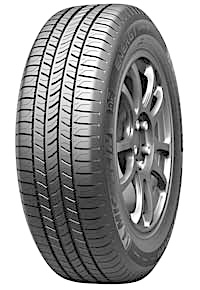
The Energy Saver A/S is Michelin's most fuel-efficient tire. It is well suited for those looking to lower CO2 emissions from a tire that is stable and durable.
- Starting at: $197.61*
- Warranty: 65k-mile warranty
- Noteworthy: This tire uses MaxTouch construction, which makes the tire contact more evenly with the road, leading to up to 65 gallons of saved fuel over the tire’s lifetime.
- Sizes: 15”, 16”, 17”, 18”
Continental CrossContact LX20 (ECO Plus Technology) 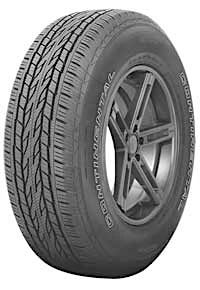
The CrossContact LX20 is a fuel saving tire for light trucks and SUVs from Continental. It is designed to save fuel for your light truck, SUV, or crossover. It performs impressively in any weather conditions.
- Starting at: $255.39*
- Warranty: 70k-mile warranty
- Noteworthy: This fuel efficient tire comes with a manufacturer’s roadside assistance and road hazard protection package. It also features one of Continental’s quietest tire designs for low road noise.
- Sizes: 20”
Other Fuel Efficient Rated Tires Worth Considering
In addition to the LRR tires listed above, these budget-priced tires carry fuel efficiency ratings:
- Continental ContiProContact (60k-mile warranty, road hazard protection, roadside assistance, fuel efficient rating, starting at $128.47/tire)
- Crosswind HP010 Plus (50k-mile warranty, fuel efficient rating, starting at $68 per tire)
- Laufenn by Hankook S FIT AS (45k-mile warranty, road hazard protection, fuel efficient rating, starting at $110 per tire)
- Otani EK2000 touring all season (fuel efficient rating, starting at $69 per tire)
- Radar DIMAX e-TOURING-1 (45k-mile warranty, road hazard protection, fuel efficient rating)
- Waterfall Eco Dynamic PCR (45k-mile warranty, fuel efficient rating)
‘Are LRR Tires Worth It’ & Other Questions Answered
Do tires affect gas mileage?
Yes, but the amount is generally measured over the lifetime of the tire rather than between gas tank fill-ups. The rolling resistance of a tire is directly related to how much energy (or fuel) your vehicle needs to expend to get your tire moving. Tires with low rolling resistance don’t require your vehicle to work as hard, and therefore will require a little less fuel.
Are fuel-efficient tires worth it?
Yes. LRR tires require less energy from your vehicle, and this improves fuel efficiency. This can have a serious impact on your fuel efficiency over the lifetime of your tire, especially if you do a lot of highway driving.
Which tire is best for fuel efficiency?
More specifically, which tire style is most fuel efficient for your vehicle type? Here's a quick guide:
- SUVs and crossovers: Go with CUV/SUV touring tires
- Compact and sub-compact cars: Go with passenger tires
- Minivans and sedans: Stick with touring and grand-touring tires
- Light trucks: Look for highway touring tires
Why do fuel efficient tires cost more?
Fuel efficient tires use special rubber compounds and construction to have the lowest road resistance possible. The result is usually a tire that has a pretty impressive tread design, low road noise, and great all-weather performance … but also higher cost. Fuel efficient rubber costs more than a “normal” all-season tire.
Before buying, take a look at your driving habits and see if you often drive in high-speed situations like the highway, where low rolling resistance tires will save you the most amount of gas possible. The gas mileage you save over the lifetime of the tire may end up being worth the extra cost of a new set of fuel efficient tires!
Photo 167864120 | Fuel Efficient | Yanyanyan881 | Dreamstime.com
How to Qualify for the $50 Offer
- Add items to your cart and begin checkout.
- Select PayPair and apply for financing.
- If you’re approved by a participating lender, you’ll see a $50 promotional rebate applied to your order total.
-
To receive the $50, you must:
- Complete your purchase with a qualifying lender,
- Agree to the payment terms,
- And make the required number of consecutive on-time payments, as specified by the lender.
Note: Offer available only through select lenders. Additional eligibility requirements and conditions apply. Rebate may be issued after verification of qualifying payment activity. Terms subject to change.
How to Purchase Tires and Wheels
With a Payment Plan
Tire Agent's payment plans make it easy to get the best partial or full set of tires and wheels for your vehicle.
It's fast, secure and won't affect your credit score
Match with multiple lenders
Why Choose PayPair?
PayPair’s Partners and Plans

No Money Down

No Money Down

No Credit Needed*

No Money Down

$1 to Start!*

No Money Down

No Credit Needed*

$1 to Start!*

No Money Down
Other Payment Plans

$0 to Little Down

Pay with your bank account

Simplified checkout experience

Faster and easier than using cards or cash

Simplified checkout experience

Faster and easier than using cards or cash
*SNAP: The advertised service is a lease-to-own agreement provided by Snap RTO LLC. Lease-to-own financing is not available to residents of Minnesota, New Jersey and Wisconsin. NO CREDIT NEEDED: Not all applicants are approved. While no credit history is required, Snap obtains information from consumer reporting agencies in connection with applications, and your score with those agencies may be affected. PAYMENT PLAN: The standard plan consists of renewable lease terms. To exercise an early ownership, consumers must make regular payments on time and schedule additional payments via the customer portal or by contacting Customer Care at 1-877-557-3769. KATAPULT: The Promotional Initial Payment (plus any applicable taxes and fees) is due at lease signing. Your lease-purchase payment amount will be determined after you select your product(s). You will not acquire ownership of the product(s) if the total amount necessary to acquire ownership is not paid. The Promotional Initial Payment does not reduce the cost of the lease-purchase agreement. The Promotional Initial Payment is only available when shopping at Tire Agent through the Katapult mobile app and at Tire Agent’s website. Product pricing subject to change and availability. Disclosure: 90-day early purchase option (EPO) terms and conditions apply: 90-Day (3 months in CA) You can buy out your lease-to-own agreement within the first 90-days. This amount includes the cash price, plus the lease-to-own cost for the first 90-days. Taking advantage of the 90-day purchase option will save you the most money! PROGRESSIVE: Ownership by rental/lease agreement with Progressive Leasing costs more than the retailer’s cash price. Select items only. Cancel or purchase early at any time. Not available in MN, NJ, VT, WI, WY. Progressive Leasing obtains information from credit bureaus. Not all applicants are approved. Standard agreement offers 12 months to ownership. 90-day purchase options cost more than the retailer’s cash price (except 3-month option in CA). To purchase early or to cancel lease, you must call 877-898-1970. Retailer cannot activate early purchase options.
